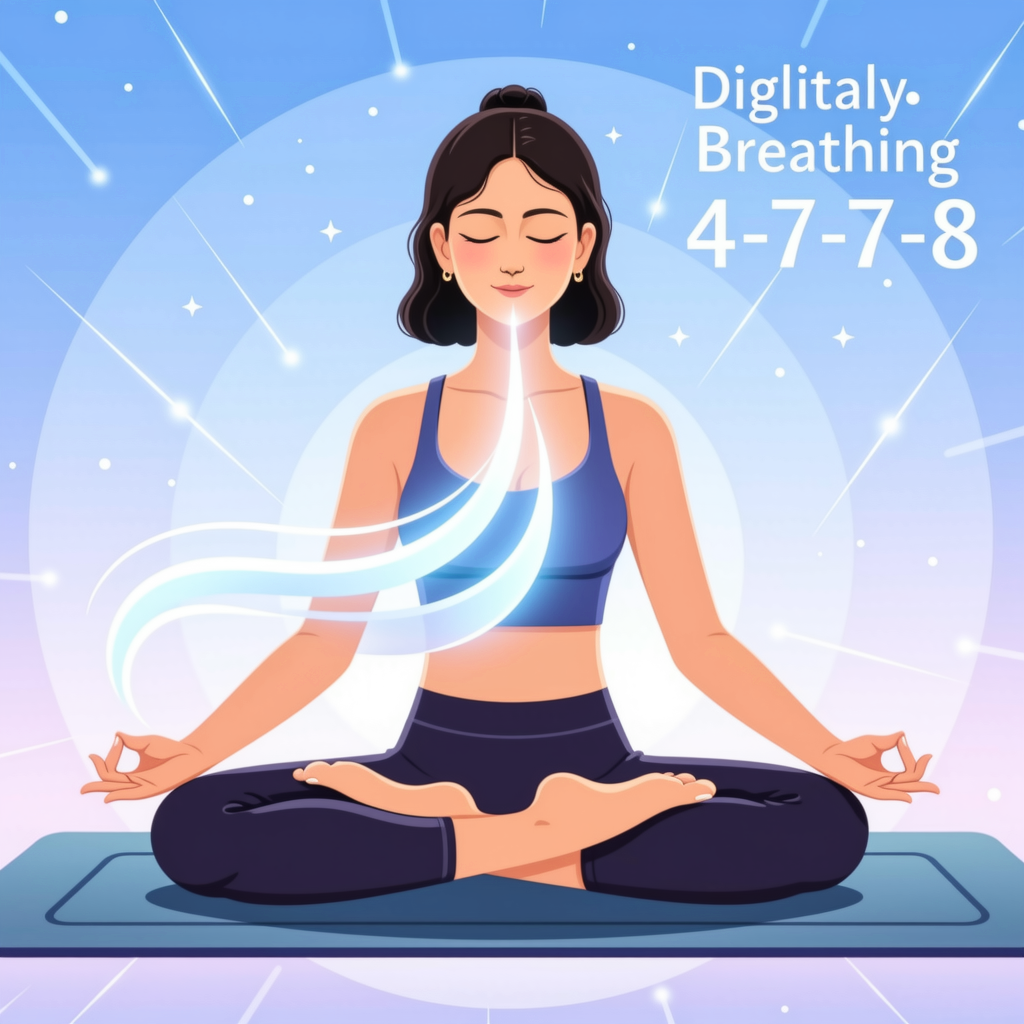Introduction
Struggling to fall asleep quickly is a common problem that affects millions of people worldwide. The good news is that there are several science-backed techniques that can help you fall asleep faster and improve your overall sleep quality. In this comprehensive guide, we'll explore proven methods that you can start using tonight.
Understanding Sleep Latency
Sleep latency is the time it takes to transition from full wakefulness to sleep. Ideally, this should be between 10-20 minutes. If it regularly takes you longer than 30 minutes to fall asleep, you may be experiencing sleep onset insomnia.
Several factors can affect sleep latency, including stress, anxiety, caffeine intake, screen time, and poor sleep hygiene. The good news is that most of these factors can be addressed with the right techniques.
The 4-7-8 Breathing Technique
One of the most effective techniques for falling asleep quickly is the 4-7-8 breathing method, developed by Dr. Andrew Weil. This technique is based on ancient yogic practices and works by activating the parasympathetic nervous system, which promotes relaxation.
How to Practice 4-7-8 Breathing:
- Inhale through your nose for 4 seconds
- Hold your breath for 7 seconds
- Exhale through your mouth for 8 seconds
- Repeat this cycle 4 times
This technique works by slowing your heart rate and calming your nervous system. extended exhale helps activate the vagus nerve, which signals your body to relax.
Progressive Muscle Relaxation
Progressive Muscle Relaxation (PMR) is a technique that involves tensing and then relaxing different muscle groups throughout your body. This helps release physical tension and promotes mental relaxation.
Progressive Muscle Relaxation Steps:
- Start with your toes - tense for 5 seconds, then relax
- Move to your feet and ankles - tense, then relax
- Work your way up through calves, thighs, and buttocks
- Tense and relax your abdominal muscles
- Move to hands, arms, and shoulders
- Finally, tense and relax your face and jaw muscles
Sleep Hygiene Optimization
Good sleep hygiene is essential for falling asleep quickly. Here are some key strategies:
🌡️ Temperature Control
Keep your bedroom between 60-67°F (15-19°C) for optimal sleep.
📵 Digital Detox
Avoid screens for at least 1 hour before bed due to blue light exposure.
☕ Caffeine Cutoff
Stop consuming caffeine at least 6 hours before bedtime.
🌙 Consistent Schedule
Go to bed and wake up at the same time every day, even on weekends.
The Military Method
The U.S. military developed a technique to help soldiers fall asleep in under 2 minutes, even in stressful environments. This method combines physical relaxation with mental visualization.
Military Sleep Method Steps:
- Relax your face - including tongue, jaw, and eye muscles
- Drop your shoulders and relax your upper and lower arms
- Breathe out and relax your chest
- Relax your legs - thighs, calves, and feet
- Clear your mind for 10 seconds by imagining a calming scene
- Repeat "don't think" for 10 seconds if thoughts persist
Guided Visualization
Mental imagery can be a powerful tool for falling asleep quickly. By focusing your mind on peaceful, calming scenes, you can distract yourself from anxious thoughts and promote relaxation.
Visualization Techniques:
- Beach scene - Imagine waves gently lapping at the shore
- Forest walk - Picture yourself walking through a peaceful forest
- Floating sensation - Visualize yourself floating on a calm lake
- Memory recall - Focus on a happy, calming memory
When to Seek Professional Help
While these techniques are effective for most people, chronic sleep problems may require professional intervention. Consider consulting a healthcare provider if:
- You consistently take longer than 30 minutes to fall asleep
- Sleep problems persist for more than 3 weeks
- You experience daytime fatigue or impaired functioning
- You suspect sleep apnea or other sleep disorders
Conclusion
Falling asleep quickly is a skill that can be developed with practice. By incorporating these science-backed techniques into your bedtime routine, you can significantly reduce your sleep latency and improve your overall sleep quality.
Start with one or two techniques that resonate with you and practice them consistently. Remember that improving sleep is a journey, and it may take some time to find what works best for you.
For additional support, consider using the RuJing app, which offers guided breathing exercises, sleep sounds, and relaxation techniques to help you achieve better sleep.
